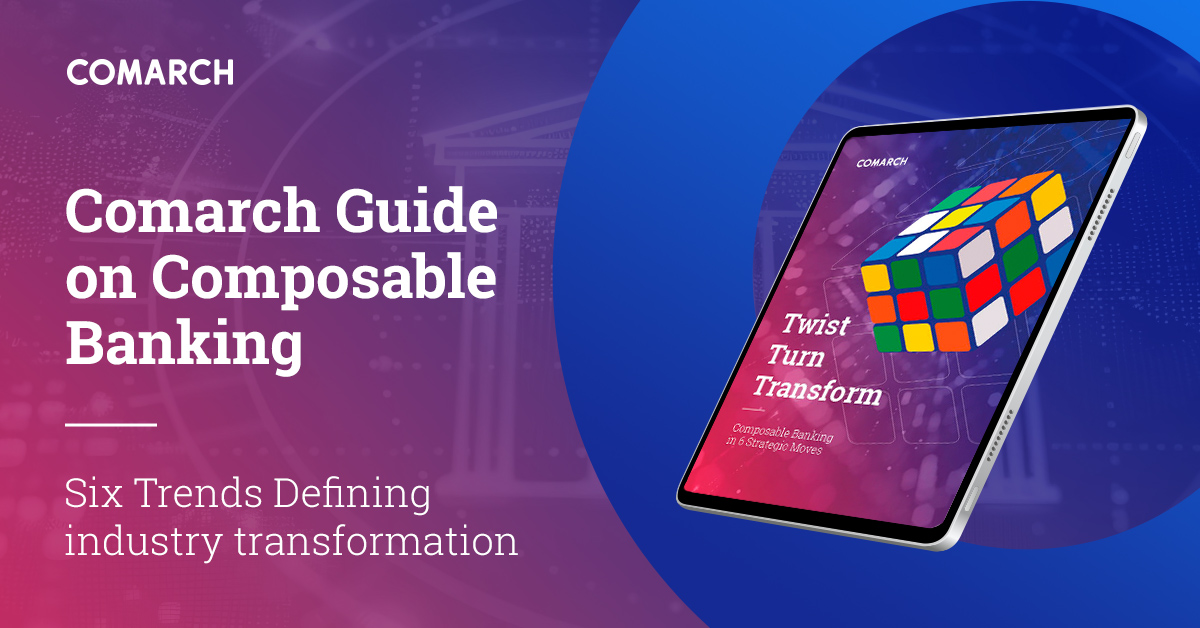
Why Composable Banking is the operating model of the future
In an industry shaped by constant disruption and relentless customer expectations, legacy banking architectures are showing their age. Complex, monolithic systems have become barriers to innovation - slowing time to market, inflating IT costs, and stifling customer experience.
Enter Composable Banking: a modular, API-driven approach to building banking services that enables financial institutions to innovate at the speed of customer demand.
The Shift from Monoliths to Modules
Composable banking is more than a technology strategy—it’s a fundamental rethinking of how banks deliver value.
Instead of building on rigid, end-to-end core systems, composable banking leverages loosely coupled components - each serving a specific function (e.g., payments, KYC, lending)—that can be assembled, swapped, or scaled independently. The result is a flexible, cloud-native architecture where innovation is continuous.
According to Comarch’s white paper “Composable Banking: A Path to Future-Ready Financial Services,” this paradigm empowers banks to create and personalize offerings faster while reducing complexity and cost.
Why Now?
- Digital Expectations Are Outpacing Legacy Tech
Today’s customers expect instant onboarding, hyper-personalized experiences, and real-time financial advice. Fintechs and Big Tech are setting the benchmark. Traditional banks, constrained by core dependencies, often cannot match this agility. - Open Banking and Regulation Require Agility
Open finance mandates, such as PSD2 and global data-sharing frameworks, demand flexible, API-first architectures. Composable systems are inherently compliant-ready, allowing banks to adapt rapidly to evolving regulatory landscapes. - Cost Pressure and Efficiency Goals
Composable systems optimize operational spending by enabling reuse, improving scalability, and reducing integration overhead. Rather than replacing entire core systems, banks can modernize incrementally - one capability at a time. - Innovation-as-a-Service Is Emerging
Composable architecture positions banks to not only consume services but also distribute them - transforming internal capabilities into external products (e.g., Banking-as-a-Service and Embedded Finance).
From Strategy to Structure: The Six Moves That Matter
Comarch’s framework identifies six strategic imperatives for banks transitioning to a composable model:
- Modularize Capabilities – Deconstruct business functions into discrete, interoperable components.
- Adopt an API-First Mindset – Ensure every service is accessible, discoverable, and externally consumable.
- Invest in Cloud-Native Infrastructure – Elastic, scalable platforms are non-negotiable for real-time responsiveness.
- Implement Headless Delivery – Decouple front-end from back-end logic to enable omnichannel engagement.
- Orchestrate, Don’t Hardwire – Use orchestration layers to assemble experiences dynamically, without rigid dependencies.
- Personalize at Scale – Use composability to tailor offerings to customer segments, behaviors, and needs in real-time.
This composable toolkit allows banks to “build their own puzzles,” as Comarch puts it - choosing and configuring capabilities that align with strategic priorities rather than vendor constraints.
Real-World Momentum
Institutions like Bluestone, HSBC, and N26 have already moved toward composable frameworks. Their gains are notable: faster release cycles, reduced operational friction, and new revenue channels from component-based offerings.
Even core providers and regulators are endorsing the shift. Industry-standard models such as BIAN (Banking Industry Architecture Network) are accelerating composability by promoting interoperability and standardized service definitions.
What’s at Stake
The question is no longer if banks should adopt composable architecture—but how quickly. Those that embrace it position themselves to lead in:
- Speed to Market – Launch new products or integrate partners in weeks, not quarters.
- Revenue Expansion – Monetize internal capabilities via BaaS or third-party APIs.
- Resilience – Replace or upgrade services without system-wide risk.
- Customer Loyalty – Deliver hyper-personalized, omnichannel experiences.
Conversely, institutions that delay risk becoming unfit for a market defined by continuous change.
Final Thought
Composable banking isn’t simply a technological upgrade - it’s a business transformation enabler. For banks seeking to thrive, not just survive, in the next decade, composability must move from aspiration to execution. The time to build is now - and it must be modular.
To explore how leading banks are operationalizing this shift, and to dive deeper into the six strategic moves outlined here, download the full white paper by Comarch: Composable Banking: A Path to Future-Ready Financial Services.



.jpg)
.jpg)









Recent Stories